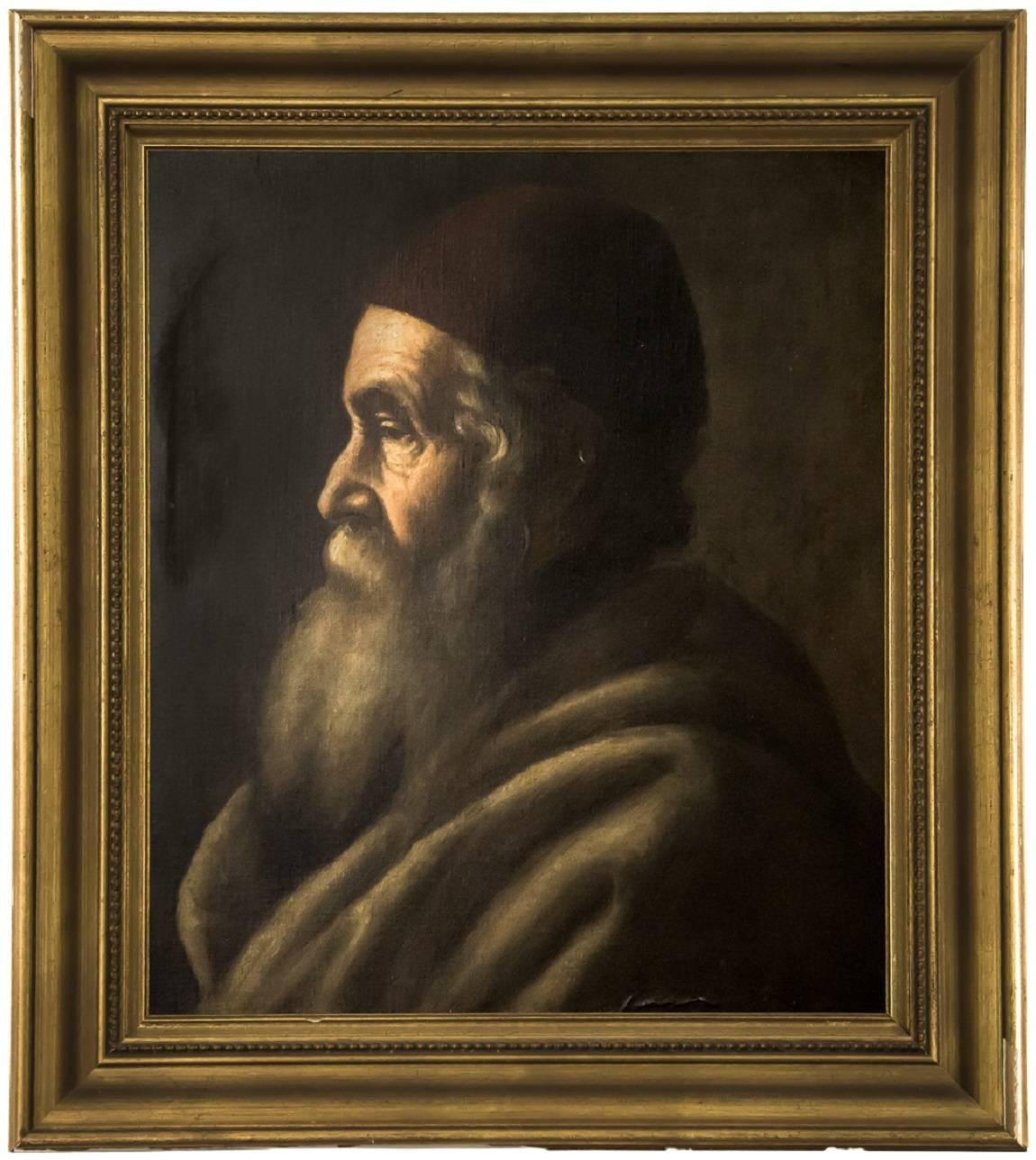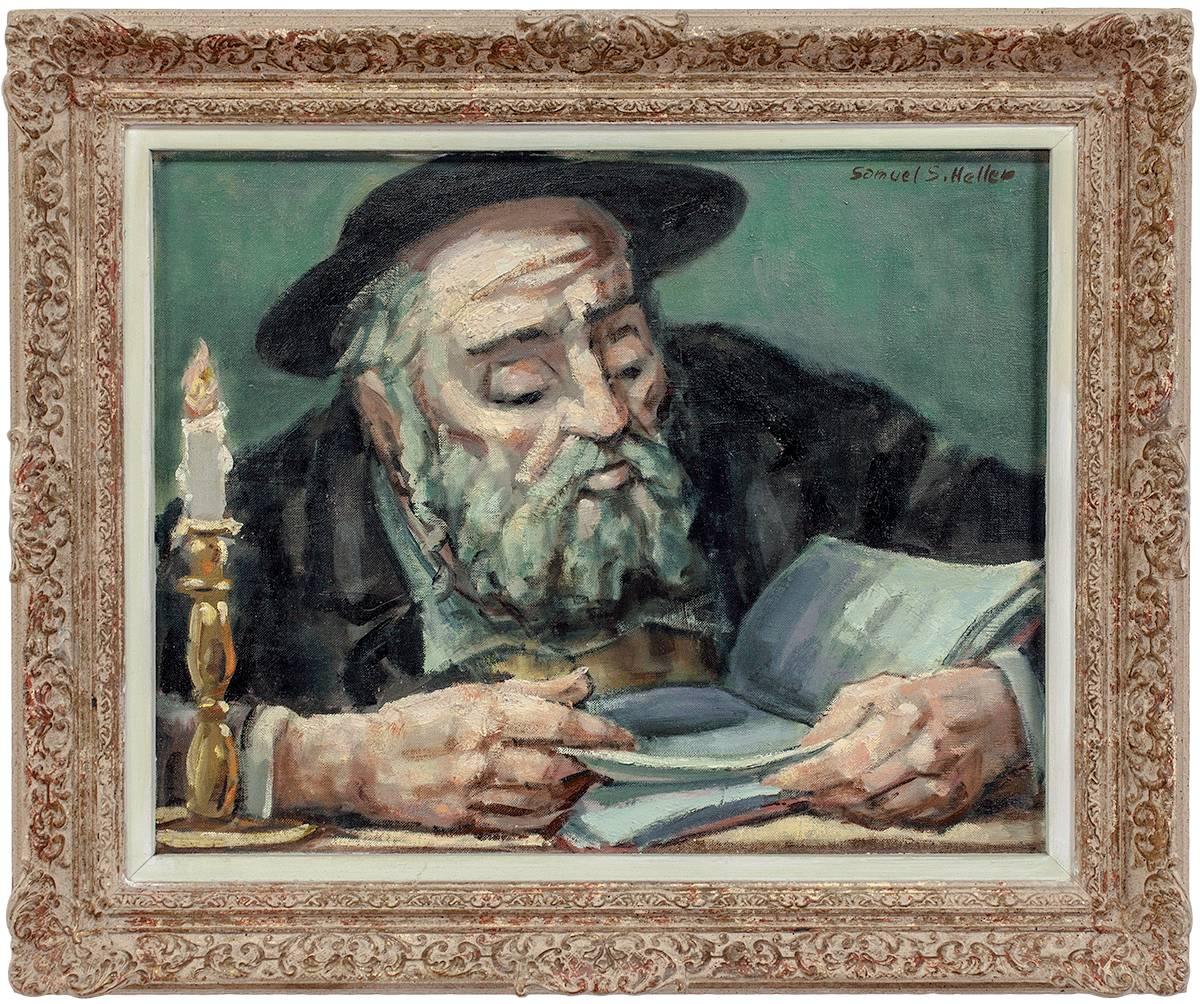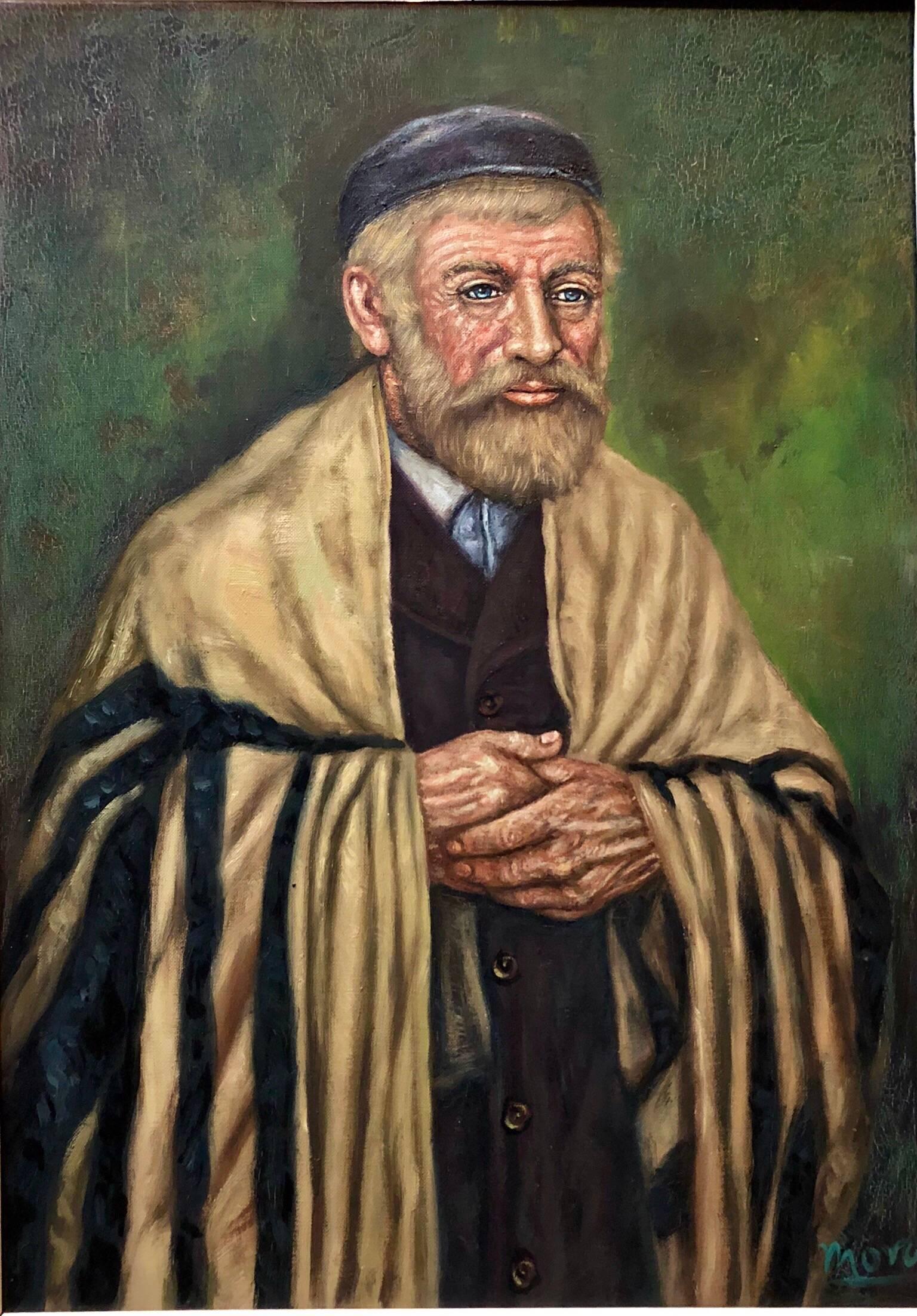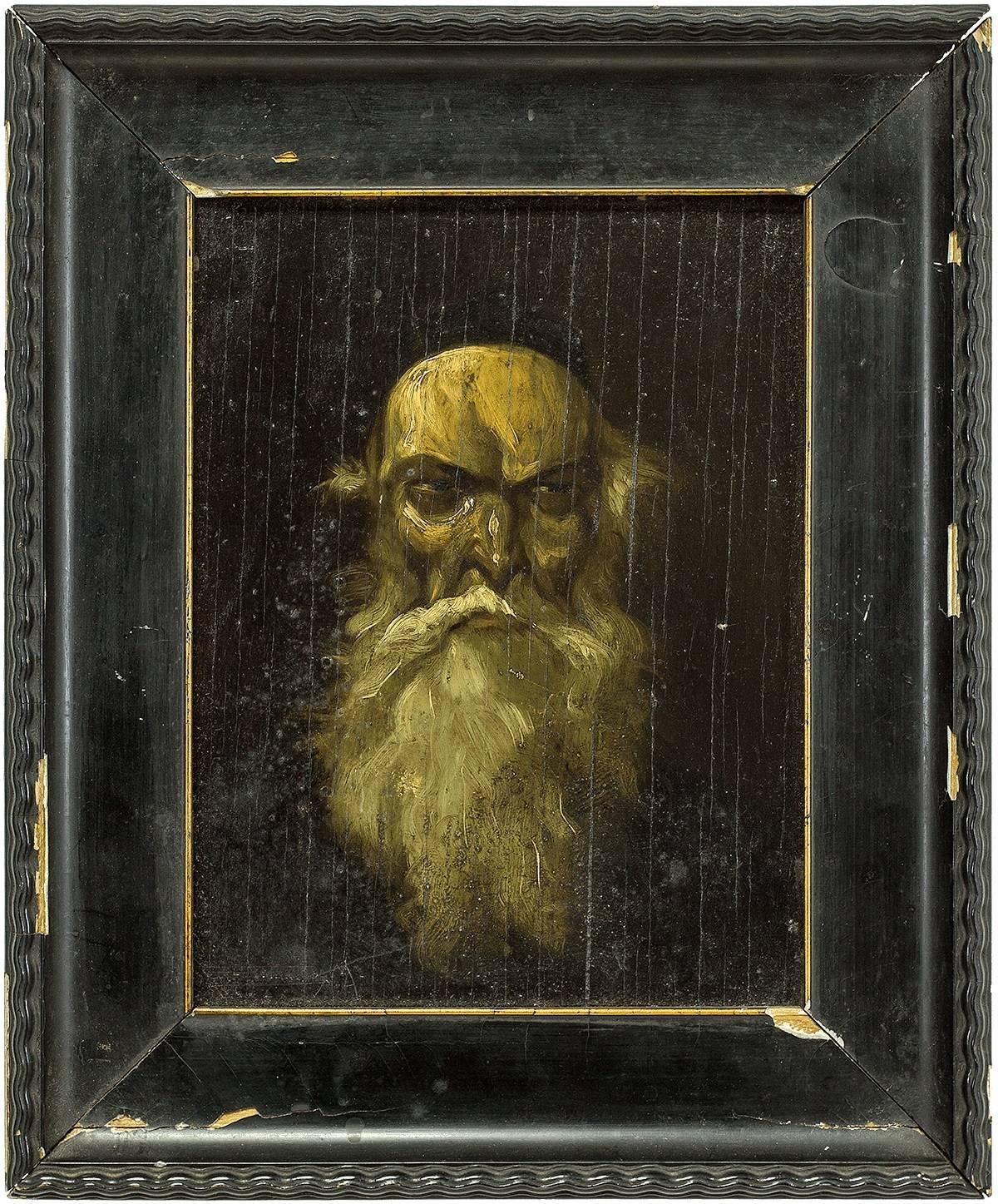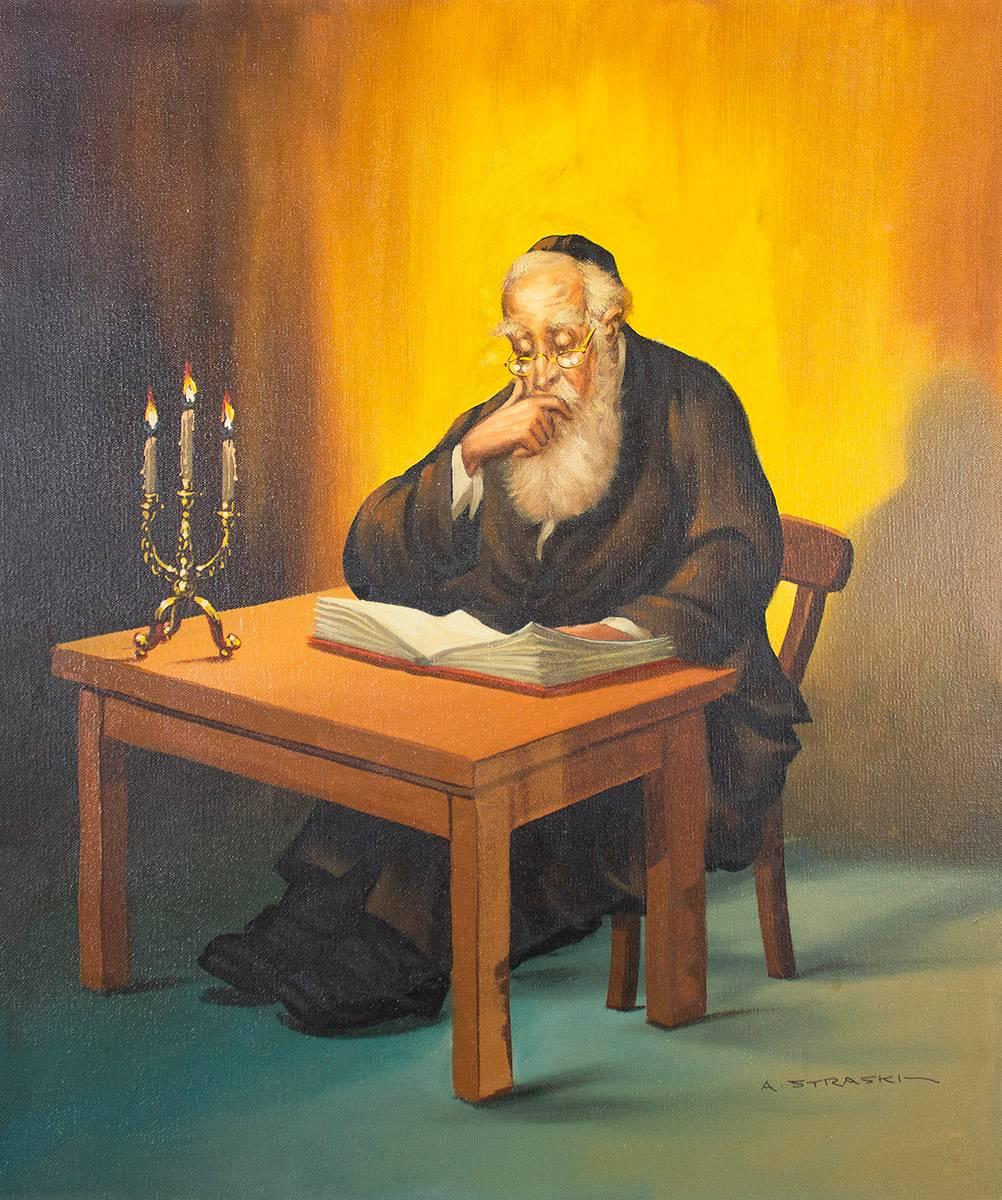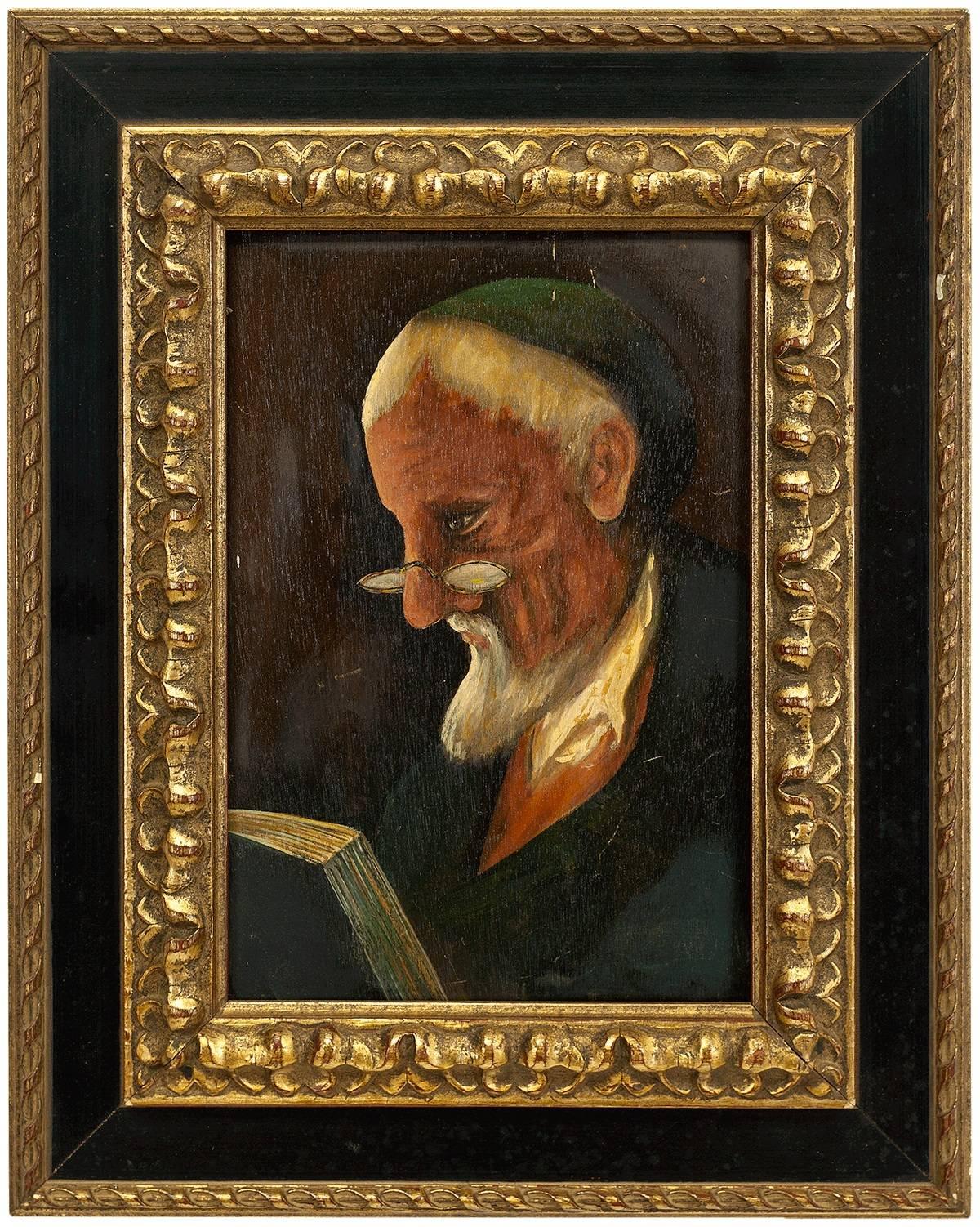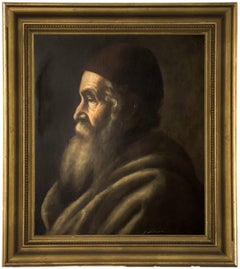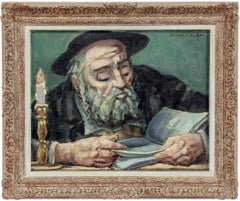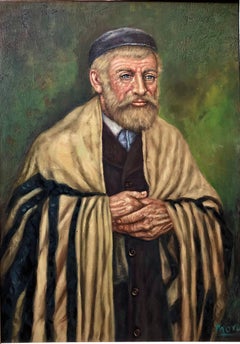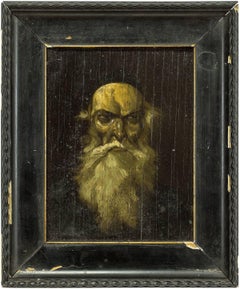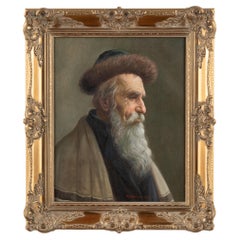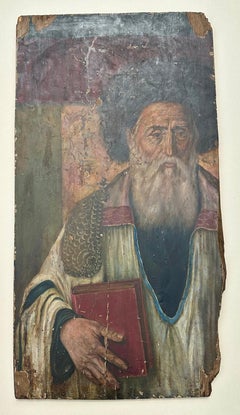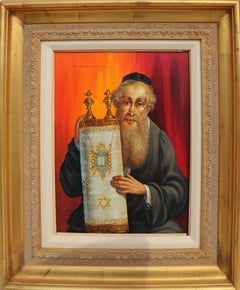Items Similar to The Cantor, Vintage Judaica European Oil Painting
Want more images or videos?
Request additional images or videos from the seller
1 of 9
UnknownThe Cantor, Vintage Judaica European Oil Painting
$1,200
£927.21
€1,071.94
CA$1,695.69
A$1,901.83
CHF 995.96
MX$23,109.03
NOK 12,646.98
SEK 11,990.23
DKK 8,001.47
About the Item
Vintage Judaica oil painting, Poland, signed illegibly by artist l.r.
- Dimensions:Height: 24 in (60.96 cm)Width: 20 in (50.8 cm)
- Medium:
- Period:
- Condition:Measurements include frame.
- Gallery Location:Surfside, FL
- Reference Number:1stDibs: LU38211707792
About the Seller
4.9
Platinum Seller
Premium sellers with a 4.7+ rating and 24-hour response times
Established in 1995
1stDibs seller since 2014
1,786 sales on 1stDibs
Typical response time: <1 hour
- ShippingRetrieving quote...Shipping from: Surfside, FL
- Return Policy
Authenticity Guarantee
In the unlikely event there’s an issue with an item’s authenticity, contact us within 1 year for a full refund. DetailsMoney-Back Guarantee
If your item is not as described, is damaged in transit, or does not arrive, contact us within 7 days for a full refund. Details24-Hour Cancellation
You have a 24-hour grace period in which to reconsider your purchase, with no questions asked.Vetted Professional Sellers
Our world-class sellers must adhere to strict standards for service and quality, maintaining the integrity of our listings.Price-Match Guarantee
If you find that a seller listed the same item for a lower price elsewhere, we’ll match it.Trusted Global Delivery
Our best-in-class carrier network provides specialized shipping options worldwide, including custom delivery.More From This Seller
View AllPortrait of a Rabbi Early 20th C. Judaica Painting
Located in Surfside, FL
Genre: Classic
Subject: Portrait
Medium: Oil
Surface: Canvas
Dimensions: 20.25" x 17.25"
Dimensions w/Frame: 25.75" x 22.75"
Category
Early 20th Century Portrait Paintings
Materials
Canvas, Oil
Rare Judaica Jewish Rabbi Oil Painting
By Samuel Heller
Located in Surfside, FL
Genre: Judaica
Subject: People
Medium: Oil
Surface: Board
Dimensions: 14 1/2" x 19"
Dimensions w/Frame: 20 1/4" x 24 1/4"
Category
Mid-20th Century Impressionist Figurative Paintings
Materials
Oil, Board
Rare Modernist Judaica Scholar Rabbi in Synagogue Oil Painting Signed Mora
Located in Surfside, FL
a mid century Judaica painting of a Rabbi wearing a Tallit prayer shawl. In the Modernist manner of Maurice Kish, Tully filmus or William Gropper. ...
Category
20th Century Folk Art Portrait Paintings
Materials
Oil
Portrait of a Rabbi
Located in Surfside, FL
Judaica Oil Painting, Portrait of a Rabbi.
Category
20th Century Modern Portrait Paintings
Materials
Oil, Board
Rare Judaica Rabbi Painting
By Abraham Straski
Located in Surfside, FL
Genre: Judaica
Subject: Religious
Medium: Oil
Surface: Canvas
Country: United States
Dimensions: 24 x 20
Abraham Straski (1903 – 1987) was a Polish born painter who moved to the United States after surviving the Nazi concentrations camps...
Category
20th Century Impressionist Figurative Paintings
Materials
Oil
Belgian Modernist Judaica Portrait of a Rabbi
Located in Surfside, FL
Judaica oil painting Rabbi portrait.
Category
20th Century Modern Portrait Paintings
Materials
Canvas, Oil
You May Also Like
Framed Polish Rabbi, Realist Oil Painting by Abraham Straski
By Abraham Straski
Located in Long Island City, NY
Artist: Abraham Straski, Polish (1903 - 1987)
Title: Untitled - Polish Rabbi
Year: 1952
Medium: Oil on Canvas, signed l.r.
Image Size: 16 x 12 inches
Frame Size: 26 x 20 inches
Category
1950s Post-War Portrait Paintings
Materials
Canvas, Oil
Oil on Canvas Painting, Portrait of Russian Man, Russia circa 1950-60
Located in Round Top, TX
Original oil on canvas portrait of Russian man wearing hat. Signed, unknown artist.
Canvas is in good condition, minor peelings, craquelure, may benefit from light cleaning.
Any scratches, cracks, dings, or age related separation to frame are reflective of age.
Please refer to professional photos for clear understanding of color, condition and details; photo lighting, individual monitor display and home lighting may all impact how item is viewed.
Measurements are taken at widest points of frame.
With over 37 years of experience selling European antiques, our brick-and-mortar storefront, Round Top Ranch Antiques...
Category
Mid-20th Century Russian Paintings
Materials
Canvas, Wood, Paint
19th century Oil portrait of a Hungarian Rabbi
Located in Woodbury, CT
This 19th-century oil on panel portrait depicts a Hungarian Rabbi, characterized by his traditional attire and solemn expression. The Rabbi is portrayed with a long, white beard and ...
Category
1890s Old Masters Figurative Paintings
Materials
Oil, Wood Panel
Rabbi and Torah, Oil Painting by Abraham Straski
By Abraham Straski
Located in Long Island City, NY
Artist: Abraham Straski, Polish (1903 - 1987)
Title: Rabbi and Torah
Year: circa 1957
Medium: Oil on Canvas, signed l.r.
Image Size: 16 x 12 inches
Frame Size: 26 x 20 inches
Category
1950s Post-War Portrait Paintings
Materials
Canvas, Oil
Portrait of a Man, Framed Oil Painting on Canvas
Located in Long Island City, NY
This painting, signed in the lower right "Kuster", is a stylized recreation of "Untitled - Portrait of a Man" by Friedrich Schaarschmidt. Like the figure in Schaarschmidt's painting,...
Category
Mid-20th Century Portrait Paintings
Materials
Oil
Rabbi with a Fur Hat, Oil Painting by Jeno Gussich
Located in Long Island City, NY
Artist: Jeno Gussich, Hungarian (1905 - ??)
Title: Rabbi with a Fur Hat
Medium: Oil on Canvas, signed lower right
Size: 24 x 20 inches
Frame Size: 30.5 x...
Category
Mid-20th Century Realist Portrait Paintings
Materials
Oil
More Ways To Browse
Judaica Artist
Gentleman Oil Portrait
Portrait King Charles
19th Century Children Portraits
Society Lady Painting
Woman In A Hat Portraits
18th Century Italian Portrait
18th Century British Portrait
Portrait Painting Girl 19th
17th Century Dutch Portrait
Oil On Canvas Military Portraits
18th Century English Oil Paintings
Blue Venus
Portrait Of A Little Girl
18th Century French Portrait Painting
Portraits Actress Painting
Lady B
Captain Portrait
